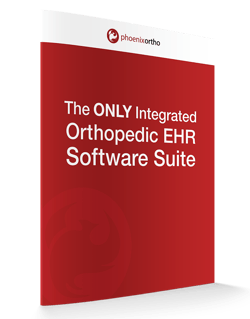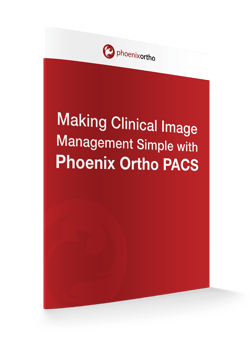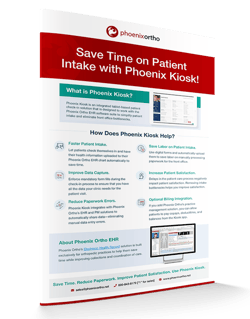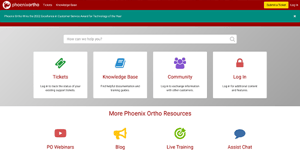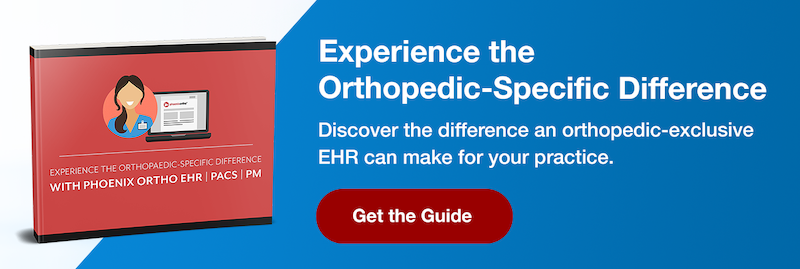In the overall healthcare industry, patient satisfaction has become an incredibly important topic. Improving patient satisfaction in clinics can be challenging, however—and this is no less true for orthopaedic clinics than it is for any other type of practice. Orthopaedic specialists have to consider many questions, such as: “What is patient satisfaction? What affects it? What does it mean for my orthopaedic clinic? How do I measure it? And, how can I improve patient satisfaction and outcomes in my practice?”
What is Patient Satisfaction?
Patient satisfaction can be defined in a few different ways by different standards. One basic definition would be the degree of satisfaction a patient experiences from their visit to an orthopaedic clinic. Others may define patient satisfaction by how motivated a patient is to return to a clinic for future care.
What Affects Patient Satisfaction in an Orthopaedic Clinic?
There are many factors that can affect patient satisfaction and outcomes in an orthopaedic clinic. Some of the most important ones were highlighted in a study of patient satisfaction and quality of care featured in the Journal of Patient Experience on Sage Journals: “Commonly cited factors affecting patient satisfaction in the literature include timely access to appointments, provider-patient relationships, academic versus private practice setting, overall wait times, and time spent with providers.”
It is important to note that no less than three of those “commonly cited factors” relate to how a patient’s time is spent at the clinic. After all, nobody likes feeling that their time is being wasted. Doctors taking patients’ time into account may find that they can improve patient satisfaction and outcomes simply by finding ways to reduce wait times in their clinics.
What Does Improving Patient Satisfaction in Clinics Mean?
Why should doctors care about improving patient satisfaction as much as they care about providing high-quality care? There are a few reasons, such as:
- Patient Satisfaction Impacts Likelihood of Return Visits. A satisfied patient is more likely to return to the orthopaedic clinic for their future orthopaedic needs. Happy patients are also more likely to form a positive relationship with their care provider, making it more likely that they will remember the practice in a positive manner.
- Satisfied Patients Are More Likely to Recommend a Clinic to Friends and Family. A satisfied patient is much more likely to recommend an orthopaedic practice to their friends and family. Dissatisfied patients, on the other hand, are not likely to recommend the practice to others and are much more likely to warn people away from a particular practice or even file formal complaints with their insurance providers or state-level regulatory bodies.
- Some Health Plans May Use Patient Satisfaction Criteria for Assessments. As noted on the Agency for Healthcare Research and Quality (AHRQ) website, “The CAHPS Health Plan Survey is a mandatory part of health plan accreditation required by the National Committee for Quality Assurance (NCQA) for both commercial and Medicaid health plan product lines.” Results from these annual surveys can affect a care provider’s “star ratings” and “may be publicly reported on Marketplace Web sites,” according to the AHRQ. These ratings may affect a care provider’s ability to qualify for certain health plans and payments.
Each of these factors can affect an orthopaedic clinic’s bottom line—impacting their ability to remain open and keep helping patients.
How Can I Measure Patient Satisfaction and Quality of Care?
Measuring patient satisfaction can be difficult at the best of times. One of the most popular methods of measuring patient satisfaction in an orthopaedic clinic is by conducting post-care surveys.
However, the contents of the survey need to be carefully considered prior to implementation. This means defining what patient satisfaction is, which criteria are most important to it, and formulating questions that can be clearly linked to the criteria being measured. Also, the overall length of the survey should be considered, as surveys that are too long may not get filled out at all—but a survey that is too short or lacks detail might not provide enough useful information to allow a clinic to make meaningful improvements to its patient satisfaction measures.
It may take time to create and adjust a patient satisfaction survey to produce optimal results. Some medical practices prefer to start with a pre-existing survey, such as the Consumer Assessment of Healthcare Providers and Systems (CAHPS) survey that was referenced by the AHRQ website. When using a pre-existing survey meant for general medical care, it is important to adapt the questions to make them more specific to an orthopaedic practices’ specific issues whenever possible.
Also, it’s important to remember that there may be some bias in the survey results—largely because the people who are most motivated to fill out the survey will be those who are either extremely satisfied or dissatisfied with their visit. People who are ambivalent about their quality of care may not wish to spend time on filling out a survey.
How Can I Improve Patient Satisfaction and Outcomes in My Orthopaedic Clinic?
By surveying outgoing patients to get their feedback, it is possible for an orthopaedic doctor to identify specific issues in their practice that are impacting patient satisfaction. In the meantime, some general patient satisfaction measures that orthopaedic clinics can put into place include:
- Improving Patient Wait Times. Time spent waiting in the clinic (especially after a scheduled appointment time) can have a significant impact on patient satisfaction. This is not limited to time spent in the waiting room. Patients sitting in an examination room waiting for an orthopaedic specialist to stop by and make an evaluation of their condition are still waiting. Finding ways to eliminate prolonged wait times and process patients more efficiently can help to improve patient satisfaction. One possible solution would be to add an orthopaedic Electronic Health Record (EHR) solution with a patient portal that allows patients to fill out their medical history and other information at home and eliminate time-consuming manual paperwork copying and faxing operations at the clinic.
- Building Relationships with Patients. Patients are more likely to react positively to (and be satisfied with the service of) people they know versus people they view as strangers. Doctors taking patients’ concerns into account and getting to know them can build a rapport which helps the patient remember their visit in a more positive light. Also, as a patient makes repeat visits, it can help to make sure they are scheduled to see the same provider each time so there is a better chance to build a positive relationship.
- Incorporating Patient-Friendly Design Elements into the Clinic’s Layout. This is a patient satisfaction measure that was recommended by Paul Gorski, Administrative Director of Orthopaedic and Rehabilitation Services at Loyola University Health System in an interview with Becker’s Hospital Review. In the interview, Gorski states that the new unit in the Loyola University have all single-occupancy patient rooms because they “afford privacy, are less noisy and encourage visitors. The rooms also have large windows, bringing in extra sunlight.” Taking the time to consider the design elements of an orthopaedic clinic to make sure that they are appealing to patients can have a subtle, but important, impact on patient satisfaction.
Need more assistance with improving patient satisfaction and outcomes in your orthopaedic practice? Reach out to the Phoenix Ortho team today for advice and information about how you can improve patient satisfaction and quality of care with an orthopaedic-specific EHR software.
Schedule a 1:1
Get in touch with Phoenix Ortho to learn more about how you can save time, money, and mouse clicks with an orthopedic-specific EHR.





